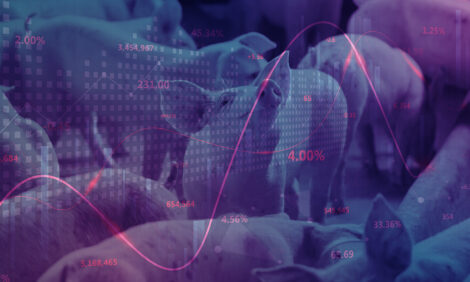



Increasing Slaughter Weights - Profit or Peril?
By Sandra Edwards, School of Agriculture, Food & Rural Development, University of Newcastle - To survive in an increasingly global market for pigmeat, all pig producers need to produce a desirable product at a competitive price. However, the recent BPEX report documenting the cost of production in different countries highlighted the challenges which UK producers face.At the present time, the UK has one of the highest costs of production within Europe, leading to severe competition to survive on the regional, let alone the global scene. Many different factors contribute to this state of affairs, and not all of these can be easily remedied. However, one factor which stands out as being under the control of the producer is the significantly lower carcass weight in UK production. Average carcass weight, whilst gradually increasing over recent years, is still only 71kg in comparison with 77-80kg in major competitors such as Denmark or Spain. Does this represent an opportunity to produce pigmeat more cost effectively?
Why are heavier carcasses more cost effective?
The major costs involved in producing the final carcass can be divided into three broad categories: the cost of producing the weaned pig from the breeding herd, the cost of feeding that pig until slaughtered, and the cost of housing and looking after it. The cost of maintaining a sow is the same, no matter what the final slaughter weight of her progeny, and can thus be considered as an ‘overhead’ for each pig sold. The more kg of carcass produced from each pig, the more this fixed overhead is spread out between them. For this reason, BPEX have estimated that a 10% increase in carcass weight has the potential to cut production costs by as much as 4p per kg. Similarly, for the abattoir, many of the costs involved in processing a carcass are the same, irrespective of its size. Thus, producing more kg of saleable meat from the carcass can reduce the cost of each kg.
So why isn’t everyone producing heavier carcasses?
Not surprisingly, the story is not so simple and there are a number of potential pitfalls involved in increasing slaughter weight. If existing accommodation is already being used to full capacity, investment in new housing is needed to accommodate the extra weeks of growth. If there is spare, but old, accommodation available, it is also surprising how destructive these heavier pigs can be with building infrastructure! It is very important to be sure that the genetics are right for increasing slaughter weight. As pigs become more mature, they tend to lay down less lean and more fat, resulting in deteriorating feed efficiency and higher carcass fat probes. There comes a point where increasing feed cost per kg gain, and reduced carcass value as more pigs fall out of top grades, will outweigh any financial benefits of selling more kg of carcass. It is very important to make this calculation for each individual farm circumstance of genetics, health and feed cost. However, above all, it is essential that the market is there for the final product and nobody should implement an increase in slaughter weight unless they know that this will be acceptable to their abattoir. Those who have the responsibility of taking the final product into the retail sector cannot afford to risk producing something that the market will find less acceptable.
Do heavier carcasses mean poorer quality?
There are concerns that increasing carcass
weight might be linked with poorer product
quality, which focus primarily on two areas.
The first is that the animals will be older and,
in consequence, produce tougher meat. The
second is that because UK production,
unlike most other European countries, is
based almost totally on use of entire males rather
than castrates, there will be an increase in ‘boar
taint’ in the meat which will be off-putting to
consumers. How justified these concerns are under
modern circumstances is the subject of much
debate. For this reason, recent trial work on
commercial farms in Scotland was commissioned
by the Scottish Executive and carried out by a team
including SAC, Bristol University, Newcastle
University and BIOSS, in close collaboration with
industry partners including QMS, Grampian Pig
Producers and the Grampian Country Food Group.
The eating quality of meat from pigs slaughtered at
either 75 or 90 kg deadweight was assessed by both
trained taste panellists, under highly controlled
conditions, and by consumers in their own homes.
Full results of the study can be found in the final
report, which can be accessed on the SEERAD
website.
A summary of some key results is shown in the table below.

The trained panel detected no adverse effect of increasing slaughter weight on tenderness or taint, whilst the consumer panel scored eating quality of meat from heavy pigs more highly for both gilts and entire boars.
Thus, for the 16 selected farms involved in this trial, increasing slaughter weight to a mean of 90 kg deadweight had no detrimental effect on eating quality attributes and did not significantly increase risk of boar taint. Indeed, at a time when many people complain that fresh pork is dry and tough, there seemed to be real benefits in eating quality under home cooking conditions. However, it must be emphasised that these farms had been preselected as having pigs of an appropriate genotype, and practicing good nutrition and management. Had this not been the case, the results could have been quite different
Source: ACMC Technical Update - March 2005









